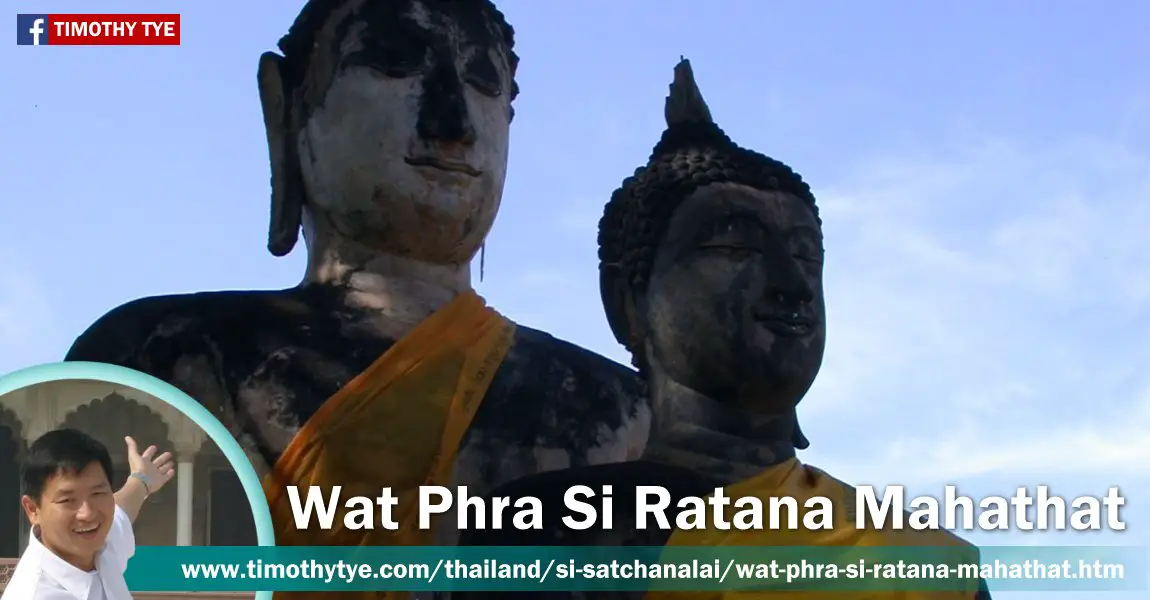 Wat Phra Si Ratana Mahathat, Si Satchanalai (23 December, 2002)
Wat Phra Si Ratana Mahathat, Si Satchanalai (23 December, 2002)
Wat Phra Si Ratana Mahathat (GPS: 17.42921, 99.81115; Thai: วัดพระศรีรัตนมหาธาตุ
 ) is one of the more unusual temple ruins in Si Satchanalai, Thailand.
) is one of the more unusual temple ruins in Si Satchanalai, Thailand.The Khmer-style temple tower offers an insight that this temple was built by the Khmers when they occupied this area. The locals call this temple Phra Prang, as "prang" refers to the temple tower, or "prasat" ប្រាសាទ
 in Khmer. Moreover fragments of roof tiles and other material resembling those at Bayon provides a clue that Wat Phra Si Ratana Mahathat may have been built during the time of Khmer king Jayavarman VII (1181-circa 1219), and that being the case, it was originally be a Mahayana Buddhist temple.
in Khmer. Moreover fragments of roof tiles and other material resembling those at Bayon provides a clue that Wat Phra Si Ratana Mahathat may have been built during the time of Khmer king Jayavarman VII (1181-circa 1219), and that being the case, it was originally be a Mahayana Buddhist temple.Wat Phra Si Ratana Mahathat has an unusual enclosure wall. Instead of rocks or bricks that are stacked, the temple is surrounded by circular laterite columns, with horizontol laterite beams placed on top of them, forming a sort of crude palisade. Entry to the temple is from the east, where you would find a modern-day viharn (assembly hall) right in front of it. Just before entering, take note of the stucco-covered sculpture sitting on two of the entrance. It has faces in four direction, similar to those at Angkor Thom, but at a much reduced scale, and nowhere as majestic.
Looking back at the entrance into Wat Phra Si Ratana Mahathat (Dec 2014)
The gateway into the temple is very low, and in all likelihood, you will have to bow down to get through. Once in, look to your right, and you will see a miniature temple. It has its own little viharn and behind that, its own stupa. It looks normal, except that it is at a reduced scale.
The "little" temple within the compound of Wat Phra Si Ratana Mahathat (Dec 2014)
All that is left of the main viharn of Wat Phra Si Ratana Mahathat is the base and columns holding up what was once the roof, but now just empty sky. The seated Buddha statue of the viharn is still there. It has the subduing Mara posture, with the right hand pointing down to earth.
To the right side of the seated Buddha statue is another Buddha, noted as being one of the most beautiful walking Buddha statue.
Wat Phra Si Ratana Mahathat (Dec 2014)
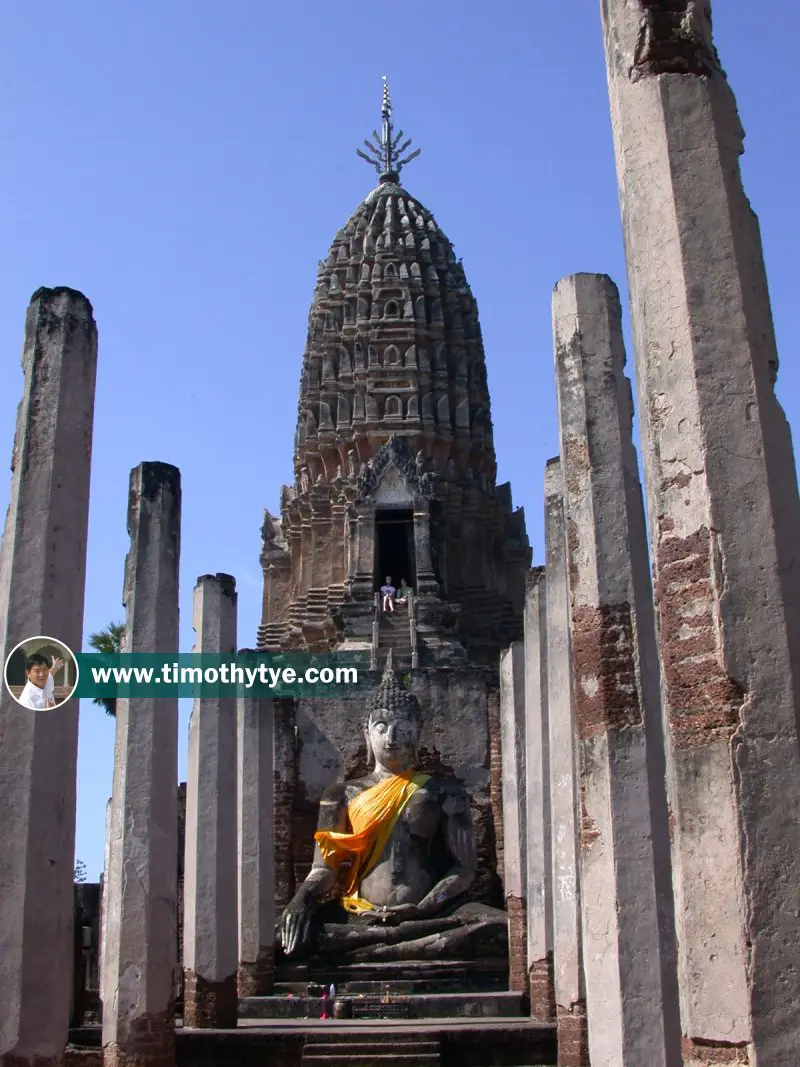 Wat Phra Si Ratana Mahathat, Si Satchanalai (23 December, 2002)
Wat Phra Si Ratana Mahathat, Si Satchanalai (23 December, 2002)
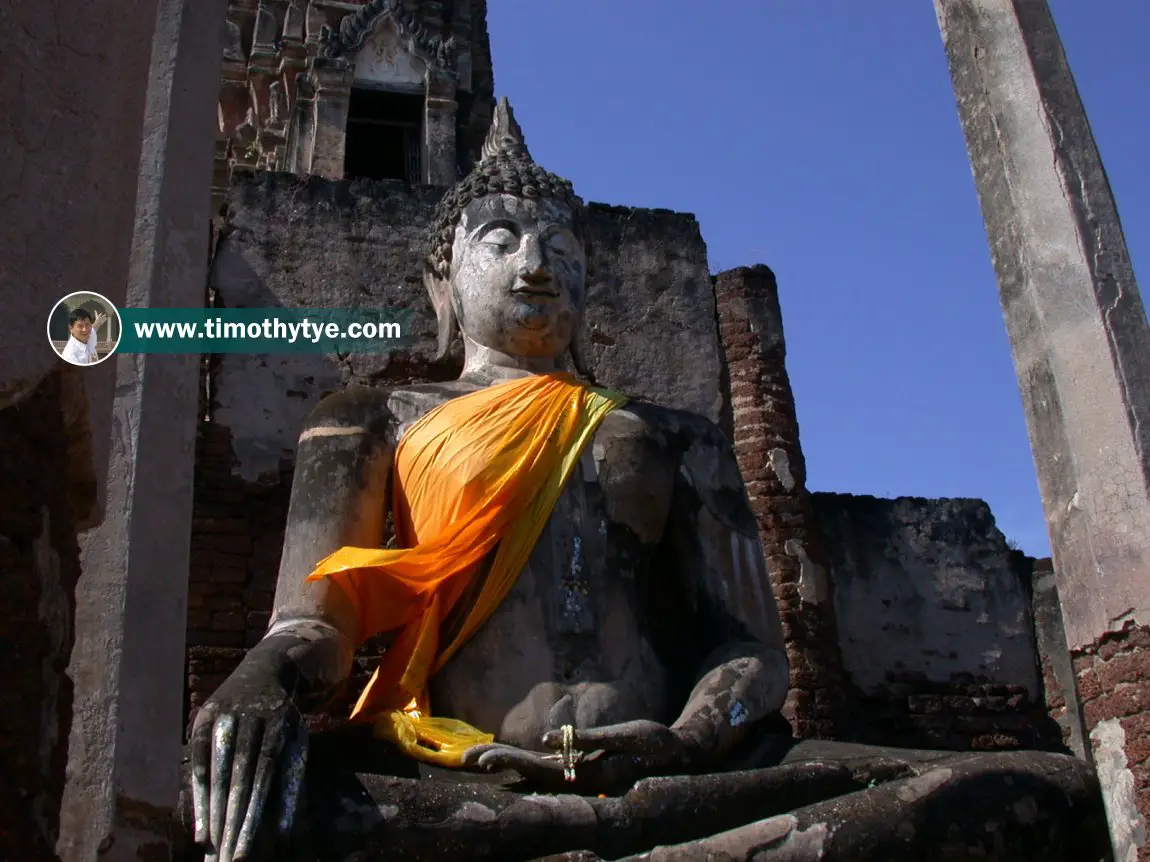 The seated Buddha statue in the main assembly hall of Wat Phra Si Ratana Mahathat, Si Satchanalai (23 December, 2002)
The seated Buddha statue in the main assembly hall of Wat Phra Si Ratana Mahathat, Si Satchanalai (23 December, 2002)
Behind the viharn is the Khmer-style prang. It has staircase that leads steeply up to the shrine at the top.
The Khmer-style prang (Dec 2014)
After checking out the chedi, continue west, where you pass by a half-broken chedi. Behind it is a mandapa, called Phra Atharot. It has a tall standing Buddha that is tightly fitted to the building.
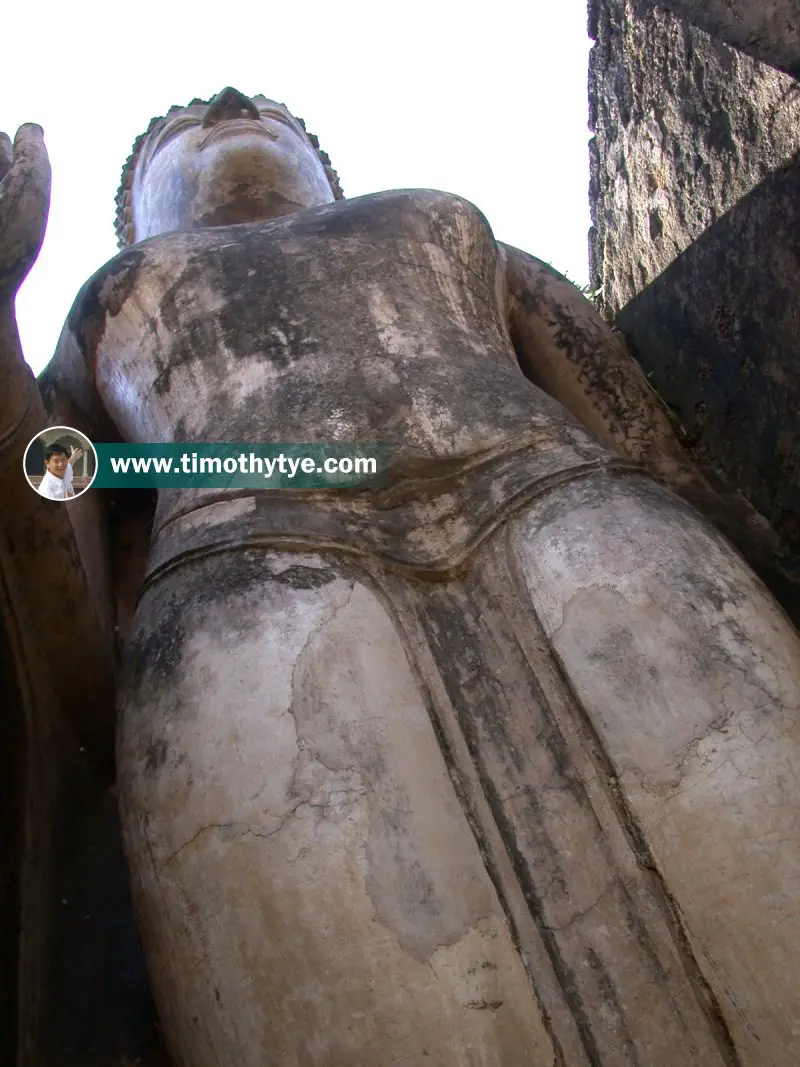 The standing Buddha in the mandapa of Wat Phra Si Ratana Mahathat, Si Satchanalai (23 December, 2002)
The standing Buddha in the mandapa of Wat Phra Si Ratana Mahathat, Si Satchanalai (23 December, 2002)
Finally, at the furthest west of the temple, there are two seated Buddha statues together. The one behind is bigger, but the arm is lost, while the one in front has its hands in the subduing Mara posture.
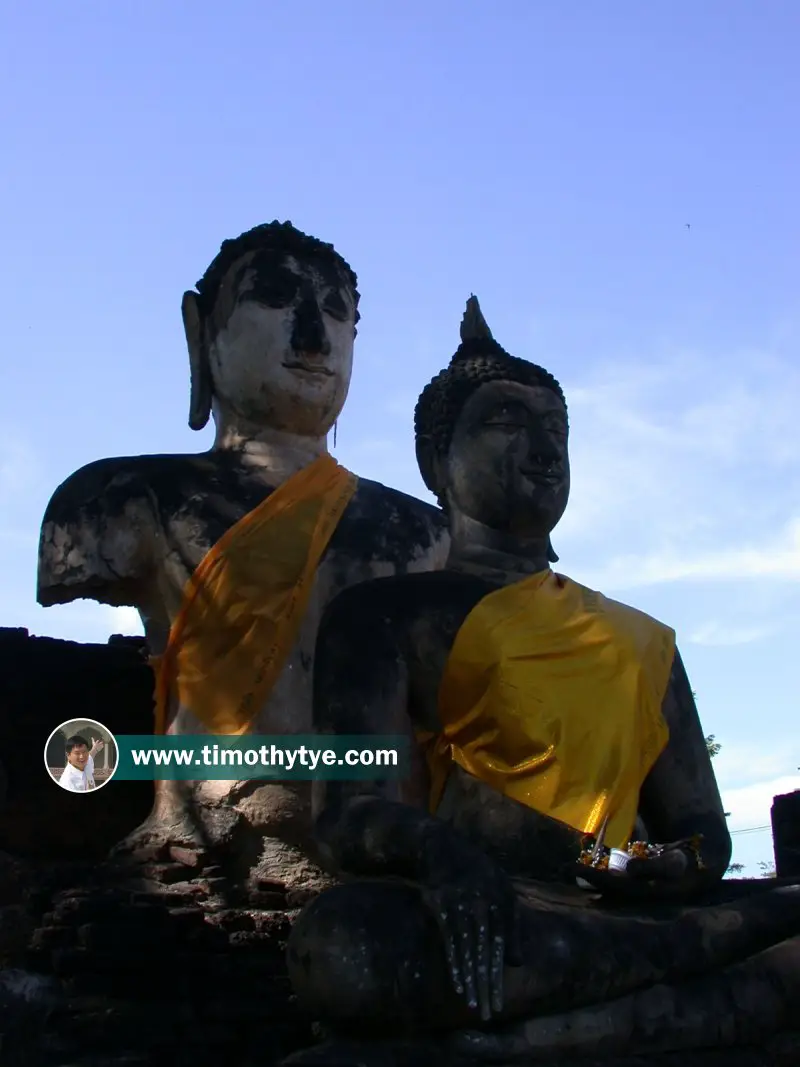 The two Buddha statues at the far west side of Wat Phra Si Ratana Mahathat. (23 December, 2002)
The two Buddha statues at the far west side of Wat Phra Si Ratana Mahathat. (23 December, 2002)
Wat Phra Si Ratana Mahathat is  on the map of Si Satchanalai
on the map of Si Satchanalai
List of Wats in Si Satchanalai and Wats in Thailand
 Latest updates on Penang Travel Tips
Latest updates on Penang Travel Tips
 Map of Roads in Penang
Map of Roads in Penang
Looking for information on Penang? Use this Map of Roads in Penang to zoom in on information about Penang, brought to you road by road.Disclaimer
Please use the information on this page as guidance only. The author endeavours to update the information on this page from time to time, but regrets any inaccuracies if there be any.
Copyright © 2003-2025 Timothy Tye. All Rights Reserved.

 , Si Satchanalai
, Si Satchanalai Go Back
Go Back